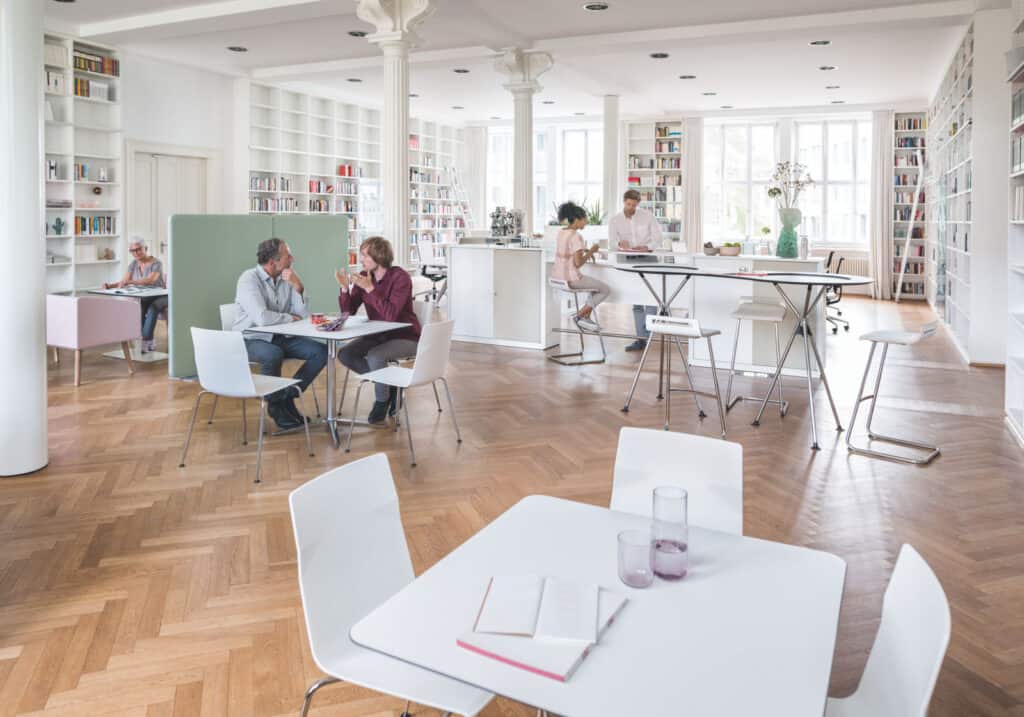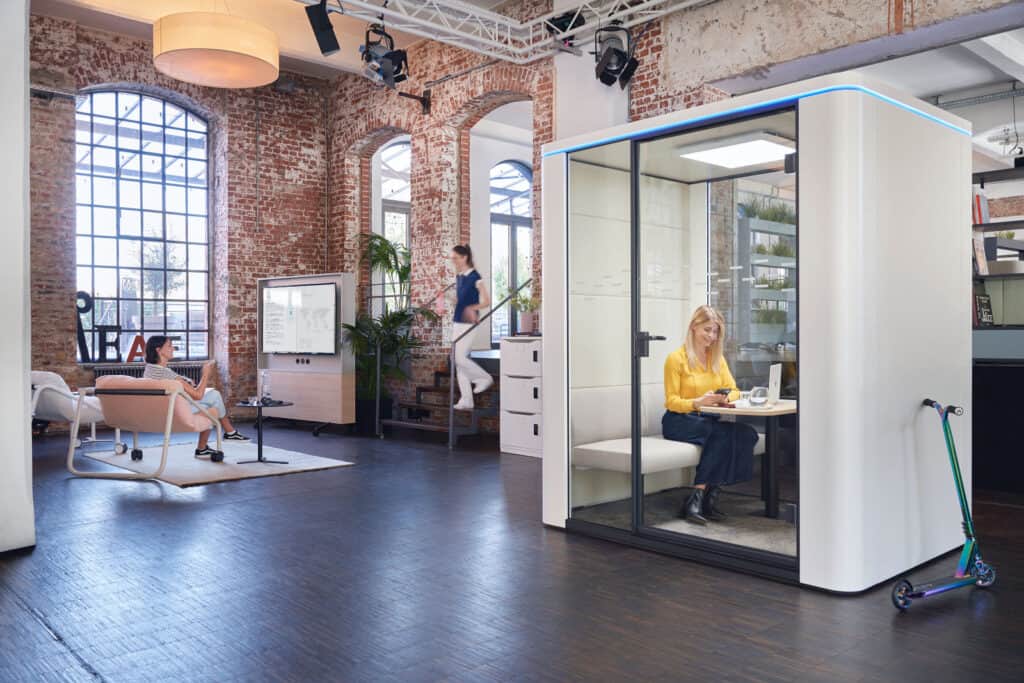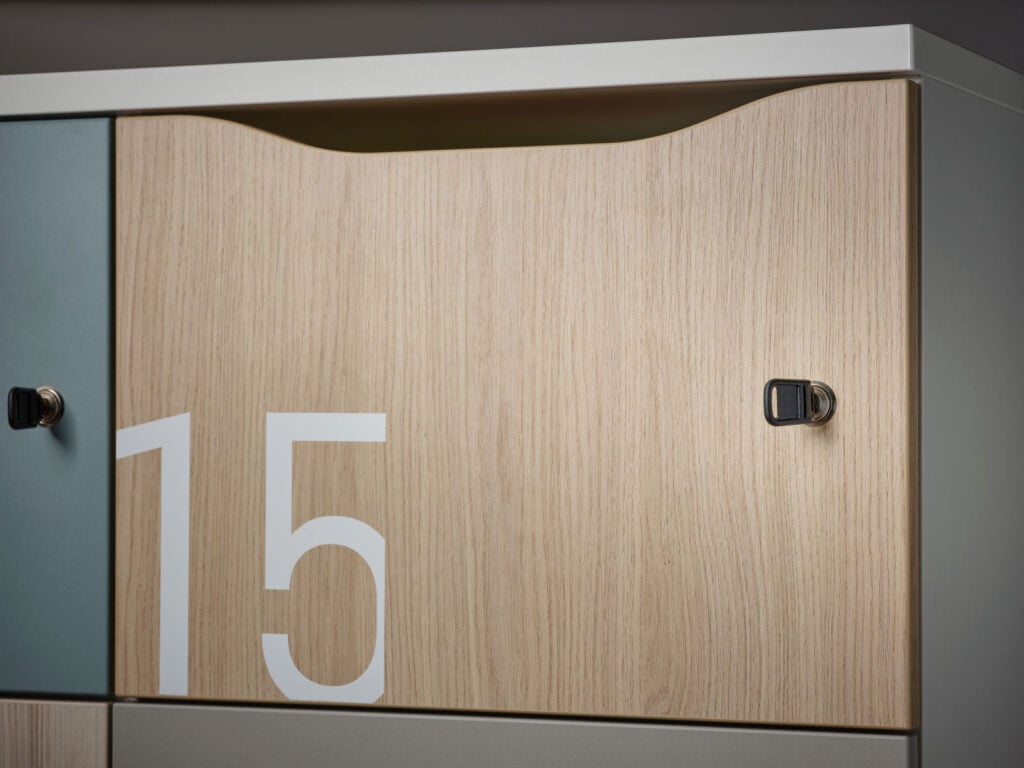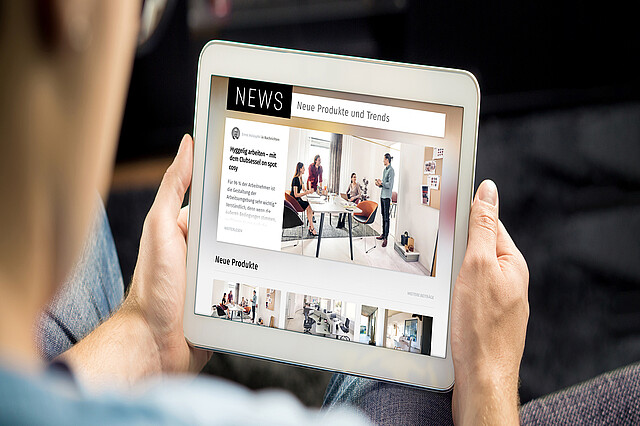The evolution of the office
During the coronavirus pandemic, work was mainly confined to the home or office. Today, there are a variety of places that are used for work. Employees increasingly want to have control over their working hours and where they work. They are looking for an environment in which they feel comfortable and in which they can better harmonise their work and personal needs. To compete with these new workplaces, the office needs to prioritise wellbeing and promote a balanced approach to the working day.

Next generation offices
One way to achieve this is to take inspiration from the models, styles and interiors of the spaces it has to compete with. By connecting with cafés, hotels and public areas, a new generation of office can be created. The result is a space that is no longer just for work, but also a place to meet, have fun, eat, create together and look after yourself. A place that is energising, comfortable and where people enjoy going to feel at ease as they can choose the space and configuration that best suits their needs.
To create a next generation office, there are a few options that focus on people's wellbeing:
Spaces for study and concentration
In recent years, employees have been able to experiment with a variety of workspaces and find out where they can work best. This has led to the development of new habits and behaviours that want to be maintained in the hybrid working model. To meet these new expectations and needs, the office should offer different situations and workspaces that are suitable for individual work. These spaces should be inspired by places outside the office, such as homes, libraries and cafés. Small bookable spaces that provide a mix of office efficiency and the comfort of a home or hotel room are also possible. Designated quiet zones along the lines of libraries can also promote concentration by minimising sources of distraction.

Areas for individuals and private matters
The hybrid working model is based on flexibility and the ability to quickly switch from work-related tasks to personal activities. Offices should therefore not only be focused on work activities, but also integrate employees' personal moments. This can be done by taking inspiration from the new workspaces that are emerging in cities, flats and hotels. Such areas are particularly suitable as they were not originally work-related.
Areas for the corporate community
In the hybrid working model, one of the main functions of the office is to facilitate social interactions between colleagues and foster a sense of community. Meeting and interacting with colleagues is one of the main reasons why people go to the office. To fulfil this function, social areas in the office should be modelled on external spaces such as bars and hotels. An inviting, informal and comfortable cafeteria can be particularly valuable here. Employees appreciate the freedom and informality of communal tables, such as those found in bars or restaurants. This approach can also be implemented in the office.

Services and areas for commuters
Mobility, and the way people spend long periods travelling, plays a significant role for many office workers. Companies therefore need to think about how they can facilitate and support employee mobility. Depending on the context and location of the office, lockers for storing personal belongings, for example, can be a good solution, especially in a flexible working environment with unassigned workstations.

Wellbeing at the centre
The next-generation hybrid office is a place where work and life merge seamlessly. By taking inspiration from the spaces it competes with and putting employee wellbeing at the centre, such an office can not only boost productivity but also create a pleasant and motivating environment.

social media channels:


